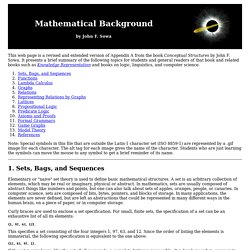

Tribune-les-machines-n-apprennent-pas. 2017 était l’année de l’intelligence artificielle et plus particulièrement celle de l’apprentissage automatique (“machine learning” en anglais).

Mais est-ce que les machines sont capables d’apprendre ? Cette question est légitime car lorsque l’on utilise des termes comme "intelligence" ou "apprentissage", nous convoquons tout un univers lié à notre expérience et par anthropomorphisme nous accordons trop facilement des qualités aux algorithmes qu’ils n’ont pas. L’apprentissage est l’une d’elles. Embedded designers not paying enough attention. 25 April 2017 The Barr Group’s third annual survey of embedded systems safety and security has concluded there remains ‘much work to be done’ by the embedded systems design community in order to achieve a safer and more secure world.

“Fortunately,” the report notes, “a lot of what needs to be done is well understood and easy to implement. What appears to be lacking is motivation.” The survey generated 2000 responses from engineers around the world, with 52% coming from the US and Canada and 27% from Europe. Gérard Berry : « L’ordinateur est complètement con » Un week-end pour réfléchir Nous avons puisé dans notre collection de grands entretiens pour vous concocter un week-end de réflexion sur les enjeux du numérique, histoire de bien attaquer cette nouvelle année scolaire.

Pour encourager les travaux sur ces sujets, Rue89 lance d'ailleurs avec le Fabernovel Institute les Prix des Talents de la recherche. Ce concours, ouvert jusqu'au 27 septembre, s'adresse aux jeunes chercheurs. A la clé : 5 000 euros de prix. Mathieu Deslandes Gérard Berry est un des plus grands informaticiens français. The Apollo 11 guidance computer code is now available on Github. The system responsible for the first moon landing is now readily available online, after an enterprising former NASA intern uploaded the Apollo Guidance Computer code to Github this week.

Although the code for the MIT-designed system has long been available to interested researchers, it's never been quite this at hand. Quartz has an excellent, thorough breakdown, but the jokes and asides are a special point of interest. Reddit has already taken a look under the hood, and uncovered some of the best tidbits. Apollo Guidance Computer. Astronauts communicated with the AGC using a numeric display and keyboard called the DSKY (DiSplay&KeYboard, pronounced 'DISS-key').

The AGC and its DSKY user interface were developed in the early 1960s for the Apollo program by the MIT Instrumentation Laboratory. The AGC is notable for being one of the first integrated circuit-based computers. Operation[edit] Each flight to the Moon (with the exception of Apollo 8, which did not take a Lunar Module on its lunar orbit mission) had two AGCs, one each in the Command Module and the Lunar Module. Chrislgarry/Apollo-11: Original Apollo 11 guidance computer (AGC) source code. Chrislgarry/Apollo-11: Original Apollo 11 guidance computer (AGC) source code. The Apollo 11 guidance computer code is now available on Github. Le Bal des cybervampires - [Site WWW de Laurent Bloch]
Trois parlementaires respectables et quelques vrais professionnels...
![Le Bal des cybervampires - [Site WWW de Laurent Bloch]](http://cdn.pearltrees.com/s/pic/th/cybervampires-laurent-bloch-128524447)
Ce matin j’ai assisté aux 3èmes Assises de la Souveraineté Numérique, présidées par mes députées préférées, Laure de la Raudière et Corinne Erhel [1], sans oublier la sénatrice Catherine Morin-Desailly. Dans la salle ou à la tribune ne manquaient pas de véritables professionnels qui savaient de quoi ils parlaient : Louis Pouzin, Tariq Krim, Bernard Benhamou, Alexandre Zapolsky et quelques autres. ... noyés dans un casting minable. Mathematical Background. This web page is a revised and extended version of Appendix A from the book Conceptual Structures by John F.

Sowa. It presents a brief summary of the following topics for students and general readers of that book and related books such as Knowledge Representation and books on logic, linguistics, and computer science. The kernel of the argument over Linux’s vulnerabilities. ‘Dodo birds had it coming’ The Cassandra myth reached its tragic climax when she warned the Trojans that a giant wooden horse on their shores — supposedly a gift of surrender after a long siege — actually was filled with Greek warriors who soon would emerge to destroy Troy.

The Trojans laughed and ridiculed Cassandra. They realized their error when it was too late. In the days after Ryabitsev gave his August keynote address suggesting that software makers should rethink how they approach security, several Linux maintainers exchanged messages on a public mailing list about the possibility of revisiting some of the issues long raised by Spengler and other critics. Why Software Fails. Why do projects fail so often?

Among the most common factors: Of course, IT projects rarely fail for just one or two reasons. The FBI's VCF project suffered from many of the problems listed above. Most failures, in fact, can be traced to a combination of technical, project management, and business decisions. Each dimension interacts with the others in complicated ways that exacerbate project risks and problems and increase the likelihood of failure.
TIOBE Software: Tiobe Index. TIOBE Index for January 2016 January Headline: Java is TIOBE's Programming Language of 2015!

Java has won the TIOBE Index programming language award of the year. This is because Java has the largest increase in popularity in one year time (+5.94%). Java leaves runner ups Visual Basic.NET (+1.51%) and Python (+1.24%) far behind. N'est pas accessible. X’s are everywhere in user interface (UI) design. A powerful symbol, [x] is capable of closing windows and popups, toolbars and tabs and anything else that might otherwise be cluttering up your screen. Clicking on [x] to close a feature has become an instinctual part of using a computer and a standard in web and software design.
Although it may seem like the ubiquitous [x] has always been a part of Graphical User Interfaces (GUI), a quick jaunt through the history of GUIs reveals that this actually isn’t the case.